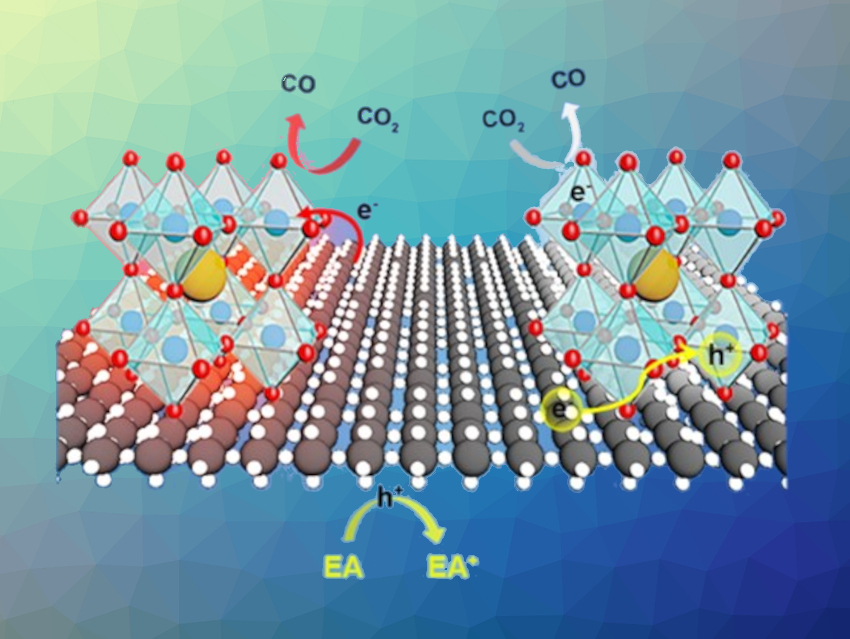Metal halide perovskite nanocrystals, e.g., CsPbBr3 nanocrystals, are promising catalysts for photocatalytic CO2 reduction due to their excellent optical properties. However, their photocatalytic performance is still low due to poor charge separation, severe charge recombination, and a narrow solar-spectrum response.
Zhengquan Li, Zhejiang Normal University, China, Enyi Ye, A*STAR (Agency for Science, Technology and Research), Singapore, Licheng Sun, Westlake University and Westlake Institute for Advanced Study, Hangzhou, China, and colleagues have developed an approach to creating a CsPbBr3/WO3 heterojunction for boosting charge separation and light-harvesting to achieve highly efficient photocatalytic CO2 reduction under visible-light and near-infrared (NIR) irradiation.
The team used O-defective WO3 nanosheets as substrates for the growth of CsPbBr3 nanocrystals (pictured). They first prepared WO3·H2O nanosheets via a solvothermal method and treated them at 300 °C under a reducing atmosphere to produce oxygen vacancies.
The hybrid photocatalyst showed excellent activity toward CO2 reduction, about seven-fold higher than pristine CsPbBr3 nanocrystals. Interestingly, the developed CsPbBr3/WO3 heterojunction can also effectively utilize the stored electrons in the O-defective states of WO3 nanosheets, resulting in a sound photocatalytic CO2 reduction under infrared-light irradiation, which is very rare for photocatalytic CO2 reduction. The work could be useful for the development of novel, efficient, and stable composite photocatalysts that can harvest the solar spectrum as broadly as possible.
- In Situ Generating CsPbBr3 Nanocrystals on O‐defective WO3 as Z‐scheme and NIR‐responsive Heterojunctions for Photocatalytic CO2 Reduction,
Xinyan Jiang, Yunxuan Ding, Song Zheng, Yinglin Ye, Zhengquan Li, Liyun Xu, Jin Wang, Zibiao Li, Xian Jun Loh, Enyi Ye, Licheng Sun,
ChemSusChem 2021.
https://doi.org/10.1002/cssc.202102295




